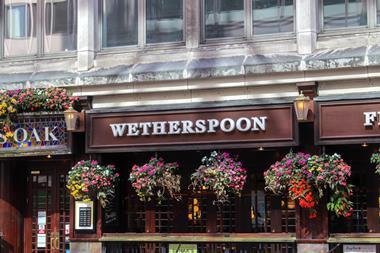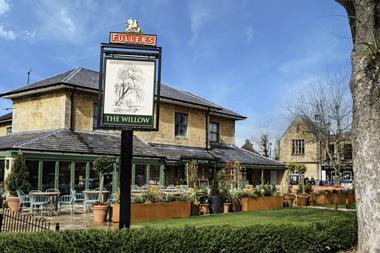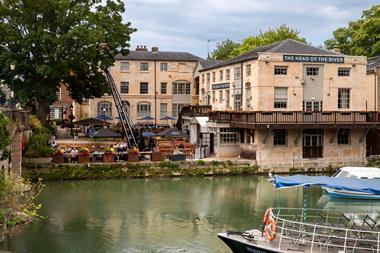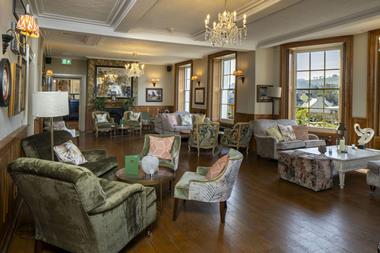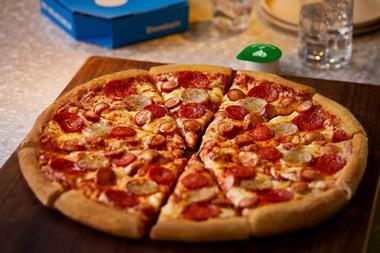Inside Track by Peter Hansen
At the ALMR’s autumn debate in October I proposed the motion that “if you want to make a profit forget food”.
Given current trends relating to the eating-out market in the UK (real growth of the UK eating-out market between 1982 and 2006 was 3.9% versus 0.1% for alcoholic drinks) the prospects for winning this debate did not look good.
Indeed, the increasing focus on food from the listed pub companies has helped them to continue improving their like-for-like sales and earnings per share. However, this growth only comes with significant capital investment and the growth in profitability should be assessed against the cost of achieving it.
We believe that food is not a panacea – our concern is that over-investment could create levels of over-capacity similar to those seen in the high street bar market at the start of the decade. The warning signs are starting to appear.
Most wounds in life tend to be self inflicted. In its 2000 annual report, the chairman of Yates’s Wine Lodges stated: “I am pleased to be able to report further substantial progress for the group during the year. A record number of new branches have been opened including the 100th Yates’s Wine Lodge.”
Twelve months later, the message in the 2001 annual report was very different: “Over the past two years trading conditions have become more competitive due to the proliferation of similar venues... Whilst the market is still growing, the level of new capital investment from both existing players and new entrants has produced over-capacity in a number of major towns and cities.”
With that in mind, should we read anything more into recent bullish statements from the pub and restaurant companies regarding food?
“People may be reluctant to buy a new TV or football shirt, but they’re very reluctant to give up going out,” Andrew Page, CEO of The Restaurant Group told the Financial Times in September 2007.
At the same time Suzanne Baker, commercial director of Laurel, told the Morning Advertiser newspaper: “The acceleration of the brand has been fuelled by a significant investment programme... We have seen food sales grow by more than 30% this year and we aim to... ensure that Slug & Lettuce becomes a leading option in the casual dining market.”
So, what happened on the high street and why is it relevant? Between 1994 and 2004, four companies (JD Wetherspoon, Regent Inns, Yates and SFI) spent £1.7bn and increased the number of pubs in their combined estates from under 200 to over 1,000.
One of these companies, SFI, collapsed in 2003 as the impact of over-capacity caught up with the group – it was too highly geared to ride out the problem of over-supply. Even JD Wetherspoon, the largest and least financially geared of the high street players, suffered from much lower growth rates and profits and its share price fell accordingly.
The same high levels of investment can now be seen in the eating-out market. The seven major public pub companies – Enterprise, Greene King, JD Wetherspoon, Marston’s, M&B, Punch and Whitbread (the “Big 7”) – have spent some £5bn of capital investment since 2000. Whilst this hasn’t all been on food, a lot of it has and will undoubtedly continue to be so.
We estimate that these seven companies, which own 24,000 pubs between them, are refurbishing managed pubs every five years and tenanted and leased pubs every eight. Assuming typical refurbishment costs for managed and tenanted pubs, the cost of this refurbishment equates to an annual expenditure of £735m – in line with 2006 levels.
Given that there are 20,000 licensed restaurants in the UK, the Big 7 alone could double the supply of eating-out venues over a seven-year period – a growth rate of 12% per annum. And it isn’t just the Big 7. For example, Fuller’s is investing aggressively in food pubs in their London and South East estate post the Gales acquisition.
Does the market growth rate of 4% (real) continue to look so favourable when viewed against these capacity additions? Will the expenditure produce the required returns? We think this is unlikely when viewed over the next five years. We are perhaps starting to witness this with Mitchells & Butlers’ recent annual results, where both increased competition and falling disposable income were cited as reasons for its current falling like-for-like food sales.
It has been long noted that the UK lags the US eating-out market. The reason for this is not just the more developed status of the US branded dining market, but also due to the greater strength of UK supermarkets and their superior own-label food offering. In the whole debate about the profitability of food, we forget Tesco at our peril. It will not stand idly by while all its customers eat an increasing proportion of their meals at the pub. Further, the Financial Times’ Lex column noted in November that the US casual dining market is now suffering from over-capacity and valuations of US casual dining stocks have dropped by over 10% this year.
What does all this mean for food within the pub sector as we approach market saturation?
For the smaller operators, history provides us with some key lessons to ensure survival:
• remember SFI – be prepared for turbulence and keep financial gearing low;
• don’t match the spending of the Big 7 – the returns are unlikely to stack up; and
• focus on the part of the market you know well. Smaller operators such as Geronimo and Peach Pub Company thrive because they “stick to their knitting”.
Finally, is there more to come in the M&A market for pub food? Brunning & Price, with its premium pub restaurant offering provided an attractive acquisition for The Restaurant Group – a trend that we believe is likely to continue. Also, any slip in operational performance could result in consolidation aided by the benefit of synergies that could act as the cure for over-capacity. Either that or we will all need to “binge eat” to keep all the new pubs and restaurants full!
Peter Hansen is founder and partner at PC Hansen & Co, a specialist corporate finance firm to the leisure industry


























